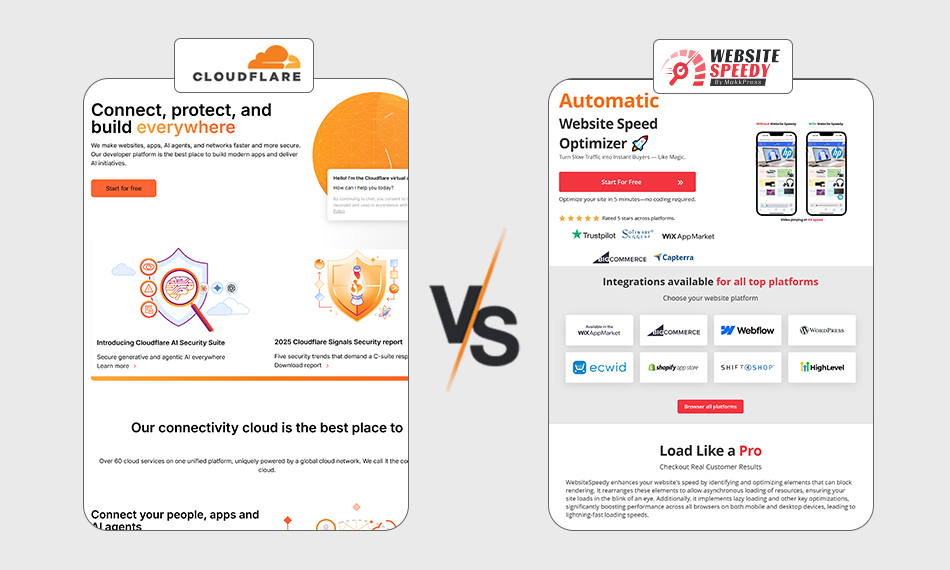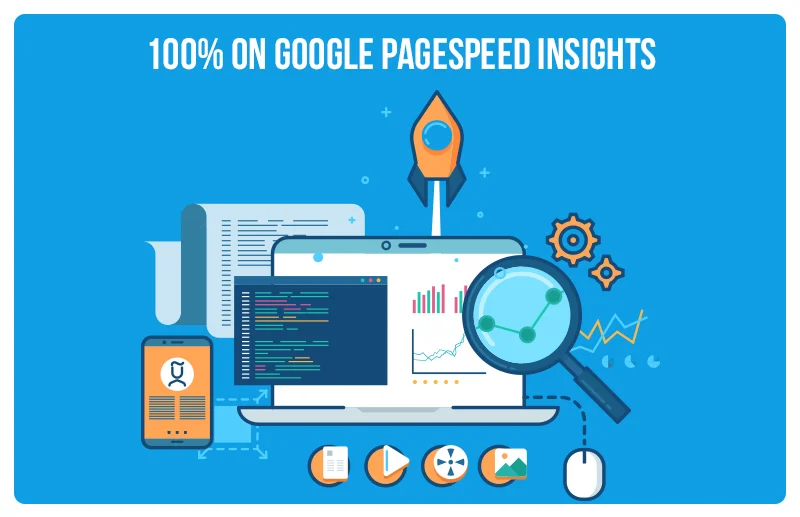TL;DR: Website Speedy enhances Core Web Vitals significantly by making changes faster and automatically. Cloudflare is the best choice for security and worldwide CDN benefits. We have compared both Cloudflare vs Website Speedy tools, considering the improvement of Core Web Vitals. When you use both together, you receive the fastest, safest, and best SEO results.
In 2025, improving Core Web Vitals (CWV) metric is one of the main goals of every-sized business. For ranking higher in search engines, you need to optimize your website for Core Web Vitals. Not only for rankings, but also for SEO and user experience, businesses are focusing on this.
Two popular solutions often recommended for improving performance are Cloudflare and Website Speedy. Both promise to boost load times, optimize delivery, and improve your CWV, but which one actually makes a measurable difference?
In this detailed Cloudflare vs Website Speedy performance comparison, we’ll break down each platform’s features and ease of use. This will help you to find out which tool is a perfect fit for your website to improve Core Web Vitals.
What Are Core Web Vitals?
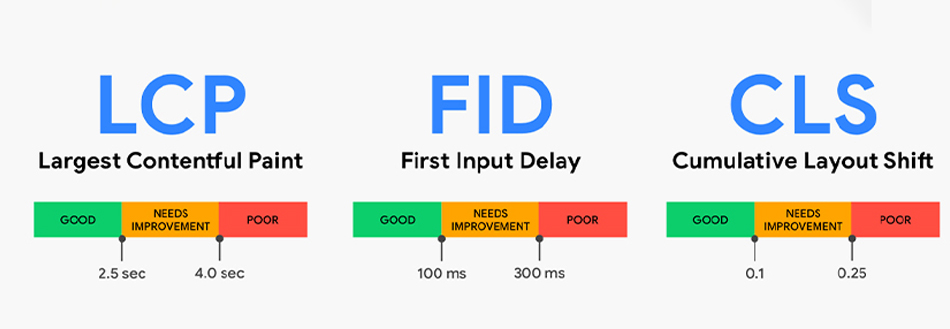
Before diving into the importance of Core Web Vitals metrics, let’s understand their basics first. CWV is a set of metrics (LCP, FCP, CLS, INP), introduced by Google to measure real-world user experience. And Google considers these metrics, including website speed, for ranking websites. They focus on three key aspects:
1. Largest Contentful Paint (LCP)
The LCP metric measures how quickly the largest content or element on your website page loads. The largest piece of the element can be any image, video, text, or banner.
The best LCP score is less than 2.5 seconds.
If the LCP of your site is slow, users will consider it sluggish, even if other sections of the page are loading quickly. You can optimize your LCP by improving server response time, CDN performance, and image loading can improve LCP significantly.
2. Interaction to Next Paint (INP)
This CWV metric measures how quickly a website responds when a user interacts with it. Basically, it measures the latency of each click, tap, and any keyboard interaction.
An INP score of between 200 and 500 milliseconds is considered good.
INP replaced FID in 2024. Now INP measures overall user interactiveness, instead of checking only the first input display.
3. Cumulative Layout Shift (CLS)
CLS measures the visual stability of the elements and text on your website and whether the elements are taking unexpected shifts during the website loads.
When the layout takes shifts, such as when a text or button moves unexpectedly, it can frustrate the user, impacting the overall user experience.
A CLS score of less than 0.1 is good. This metric can be improved by conserving space for images and loading fonts correctly to avoid layout instability.
LCP, FID, and CLS are the key analytics that Google analyzes to measure the real-world page performance. They have a direct effect on SEO rankings and user satisfaction.
An Overview of Cloudflare
Cloudflare is a well-known web performance and content delivery network (CDN) service provider around the world. It routes your site’s traffic to your site over a network of servers all around the world, caching material closer to consumers and improving loading speed.
Cloudflare is a complete solution for both speed and security. In addition to improving performance, it also offers DDoS protection, SSL encryption, and a Web Application Firewall (WAF).
How Cloudflare Can Affect Core Web Vitals
Cloudflare has a major effect on Core Web Vitals in a few important ways:
1. Caching to improve LCP
Cloudflare speeds up the loading of large elements of your pages by serving cached versions of them from edge servers. Images, CSS, and JavaScript are examples of static materials that are delivered faster, which greatly improves LCP scores.
2. Improving INP by optimization
Cloudflare’s Auto Minify and Rocket Loader capabilities streamline the loading of JavaScript and CSS, reducing main-thread blocking. This helps improve INP and overall interactivity of the website.
3. Improves CLS
Cloudflare doesn’t directly control layout shifts, but quicker content delivery and asynchronous script loading can help keep your layout stable while it’s being rendered, which stops CLS surges.
In short, Cloudflare speeds up things by caching and requires optimization, but you need to tweak it for optimum results. Now, here’s a quick look at Website Speedy.
An Overview of Website Speedy
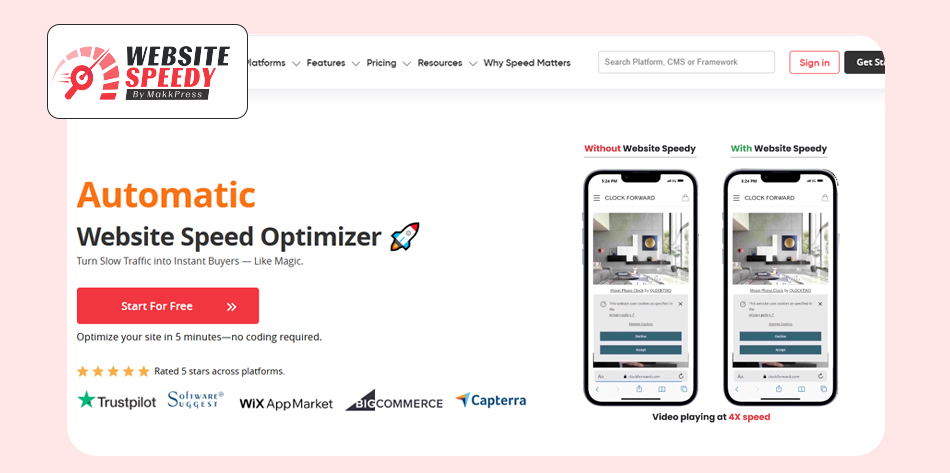
Website Speedy is a performance improvement platform that focuses on making Core Web Vitals and Google PageSpeed Insights scores better with as little technical work as possible.
Cloudflare has a lot of networking technologies, but Website Speedy is mainly focused on speeding up websites with automated smart caching, code compression, image optimization, and Core Web Vitals tuning.
It’s made for people who desire easy optimization without having to change complicated CDN settings. Thus, it’s a useful beginner-friendly platform for website performance optimization.
How Website Speedy Affects Core Web Vitals
1. Improves LCP
Website Speedy ensures that your largest content elements load rapidly by speeding up server response times, image delivery, and important render pathways. It speeds up visual rendering by using lazy loading and next-gen image formats like WebP.
2. Better INP scores
Website Speedy makes websites more interactive and reduces input delay by eliminating unnecessary JavaScript, putting off non-critical scripts, and speeding up main-thread execution.
3. Enhance CLS Score
Website Speedy helps keep layouts stable by preloading fonts, optimizing CSS rendering, and reserving space for images.
In short, Website Speedy is an all-in-one solution that focuses on different aspects, including Core Web Vitals performance, an important Google metric.
After delving into how both these tools improve Core Web Vitals, here’s a comparison of Cloudflare and Website Speedy based on their specific features.
Cloudflare vs Website Speedy: Feature-by-Feature Comparison
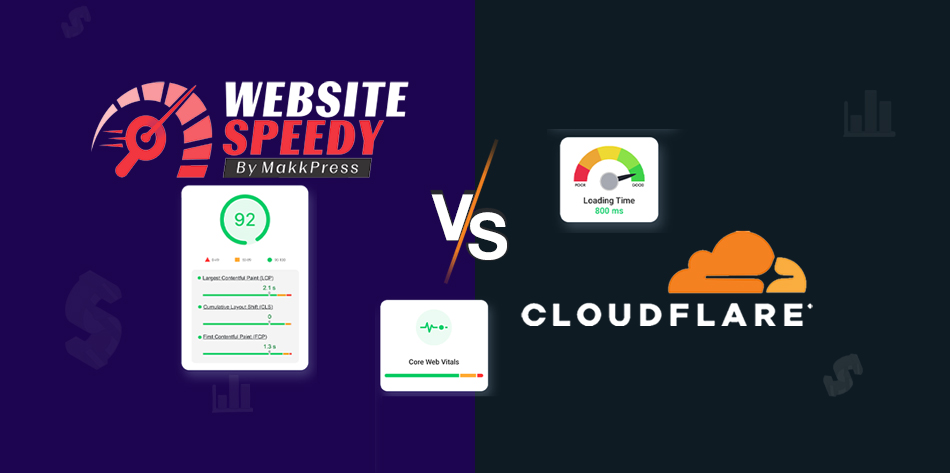
If we compare Cloudflare vs Website Speedy in terms of Core Web Vitals and website speed optimization, both are no-coding tools for improving website performance. Both complement CDN and Caching features, but Cloudflare lacks in Core Web Vitals optimization as it performs partial optimization of CWV metrics like LCP, CLS, and FID. Also, it cannot track real-time CWV score.
While Cloudflare is powerful for global delivery and caching, Website Speedy addresses the elements that Cloudflare alone cannot fix, making it a must-have for websites serious about Core Web Vitals.
Let’s take a look at how Cloudflare and Website Speedy stack up against each other in important areas.
1. Improving Speed
Cloudflare:
- Has more than 300 data centers across the world.
- Includes features like Brotli compression, Rocket Loader, and Auto Minify.
- It facilitates static caching, which is appropriate for websites with a lot of elements or that work globally.
- It offers some advanced capabilities, like APO for WordPress in its paid version.
Website Speedy:
- This tool focuses on optimizing the whole user experience and website speed, with caching, compression, and image optimization.
- Offers features such as lazy-loading, critical CSS generation, and next-gen image delivery.
- Website Speedy can be tailored for smaller business needs and content management systems (CMS) like WordPress, Shopify, or Wix.
- All these optimizations are done automatically, with very little manual setup needed.
In brief, Cloudflare is great at delivering content around the world, but Website Speedy goes deeper into front-end performance, directly enhancing Core Web Vitals efficiently.
Effects on Core Web Vitals
Cloudflare:
- CDN caching makes LCP a little better.
- Rocket Loader makes little changes to FID.
- Indirect effect on CLS.
- Needs to be set up and tested manually.
Website Speedy:
- Automatically implements best practices for improving CWV without technical and coding expertise.
- Makes LCP, FID, and CLS better directly through focused optimizations.
- Shows measurable improvements in LCP, FID, and CLS scores with real-time performance testing on its own.
- Uses real-time data to actively optimize Core Web Vitals.
In short, Website Speedy wins here since it especially focuses on Google’s exact performance metrics. On the other hand, Cloudflare has a wider but less specific effect.
Ease of Use and Setup
Cloudflare:
- Needs adjustments to DNS and the CDN setup.
- A little bit of technical knowledge is needed to use Cloudflare.
- Possible to connect with CMS platforms, although not easy for beginners.
Website Speedy:
- Made with ease of use, just install and connect.
- Optimizations that happen automatically, without any manual code.
- Core Web Vitals tracking on an easy-to-use interface.
In ease of use, Website Speedy is the better choice if you want quick results without having to do a lot of technical work. It is especially beginner-friendly as it automates most of the site’s work.
Pricing – Cloudflare vs Website Speedy
Cloudflare:
- Has a free package that includes basic CDN and caching.
- Paid plans start at $25 per month and incorporate services like WAF, image optimization, and APO.
- Cloudflare is the best for big locations or large businesses.
Website Speedy:
- Prices are clear and based on performance levels.
- Website Speedy Pricing starts at $18 per month.
- Usually affordable for small to medium-sized organizations.
- All optimizations are included, with no hidden add-ons.
Cloudflare is a globally known platform, efficient for enhancing security and CDN. While Website Speedy is better for improving Core Web Vitals and speed, and is more affordable for every-sized business in comparison to Cloudflare.
Best Tips to Maximize Core Web Vitals on Any Platform

No matter the tool you use, you can improve your Core Web Vitals even more by doing the following:
1. Image Optimization
Optimize your web images and present them in new formats like WebP and AVIF. Website Speedy and Cloudflare both can optimize web images automatically when integrated with the website.
2. Implement Lazy Loading
Load images and videos only when they are in the user’s view. This makes the first load times shorter and the LCP better. Lazy-loading not only distributes the server load but also improves the overall CWV of that site.
3. Reduce the size of CSS and JavaScript
Remove the comments, whitespace, and code that are not needed anymore. Both platforms, Website Speedy and Cloudflare, have an auto-minification feature to speed up delivery.
4. Reduce Third-Party Scripts
Ads, tracking tags, or widgets from outside sources often stop rendering of critical components. Only use the scripts you need, and load the rest of them asynchronously.
5. Allow Browser Caching
Store static files on the user’s device so they load faster when they come back. It enhances the overall user experience and loading time, ultimately improving CWV of your site.
6. Regular Performance Testing
Use tools like Google PageSpeed Insights, Lighthouse, or the built-in analyzer on Website Speedy to keep an eye on your stats over time. This will highlight problem areas promptly, helping you avoid sudden glitches.
Conclusion
One of the best methods to improve user experience, SEO, and conversions in one go is to improve your Core Web Vitals. Cloudflare and Website Speedy are both efficient tools, with each one having its own strengths.
Cloudflare is the best choice for security, scalability, and delivery around the world. But, if your main goal is to easily improve Core Web Vitals and front-end speed, Website Speedy is the superior alternative. It is an affordable option for small-sized businesses as well.
You may even choose one of them according to your business size, needs, and budget. Another way is to test your website’s Core Web Vitals after implementing these tools to find which one really helps your business.












































